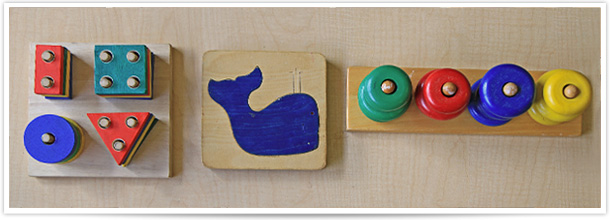
Activity Ideas:
- Hilberg, Chang, & Epaloose’s (2003) Designing effective activity centers for diverse learners: a guide for teachers at all grade levels is an excellent resource for designing and implementing activity centers. Resources for creating activity centers and sample materials such as task cards, rubrics, and activity center ideas are provided. PDF Article: Hilberg et al 2003.pdf
Task Cards:
Lesson Plan Templates and Samples:
- Lesson-Plan-Template(.pdf)
- Sample-Kindergarten-Lesson-Plan(.pdf)
- Sample-Hoku-Activity-Plan(.pdf)
- Sample-Preschool-Lesson-Plan(.pdf)
Forms of Assistance:
Special Education:
- Mercer, & Mercer’s (1998) Teaching Students with Learning problems provides a scope and sequence skills lists for grades K-6.
Activity Center Rotation Charts:
- From “Multiple Simultaneous Diverse Activity Settings with Teacher Center, Sample Rotation Schedule for Five Activities Without Follow-up/Preview” Center Rotation Charts
Community Building and Early Content Theme:
ECE Rubric:
COR Rubric:
Phasing in:
Standards:
- Tips-for-Joint-Productive-Activity-JPA(.pdf)
- Tips-for-Language-and-Literacy-Development-LLD(.pdf)
- Tips-for-Contextualization-CTX(.pdf)

CREDE Hawai‘i Selected Readings
Au, K. H. (2008). If can, can: Hawai‘i Creole and reading achievement. Educational Perspectives, 41(1-2), 66-76. (pdf)
Dalton, S. S. (2007). Five standards for effective teaching: How to succeed with all learners. San Francisco: Wiley.
Doherty, R. W., Hilberg, R. S. (2008). Efficacy of Five Standards in Raising Student Achievement: Findings From Three Studies. The Journal of Educational Research, vol. 101, no. 4, 1-24. (pdf)
Doherty, R. W., Hilberg, R. S., Pinal, A., & Tharp, R. G. (2003). Five standards and student achievement. NABE Journal of Research and Practice, 1, 195-206.
Estrada, P. (2005). The courage to grow: A researcher and teacher linking professional development with small-group reading instruction and student achievement. Research in the Teaching of English, 39, 320-364.
Goh, S. S., Yamauchi, L. A., & Ratliffe, K. T. (2012). Educators’ perspectives on instructional conversations in preschool settings. Early Childhood Education Journal, 40.
Hilberg, R. S., Chang, J. M., & Epaloose, G. (2003). Designing effective activity centers for diverse learners: a guide for teachers at all grade levels: Center for Research on Education, Diversity & Excellence, University of California, Santa Cruz.
Hilberg, R. S., Tharp, R. G., & DeGeest, L. (2000). The efficacy of CREDE’s Standards-based instruction in American Indian mathematics classes. Equity and Excellence in Education, 33, 32-40. (pdf)
Mcintyre, E., Kyle, D. W., & Moore, G. H. (2006). A primary-grade teacher’s guidance toward small-group dialogue. Reading Research Quarterly, 41(1), 36-66. (pdf)
Saunders, W., & Goldenberg, C. (2007). The effects of an instructional conversation on transition students’ concepts of friendship and story comprehension. In R. Horowitz (Ed.), Talking texts: How speech and writing interact in school learning. Mahwah, NI: Lawrence Erlbaum.
Tharp, R. G. (2006). Four hundred years of evidence: Culture, pedagogy, and Native America. Journal of American Indian Education, 45(2), 6-25.
Tharp, R. G., & Dalton, S. S. (2007). Orthodoxy, cultural compatibility, and universals in education. Comparative Education, 43, 53-70.
Tharp, R. G. & Entz, S. (2003). From high chair to high school: Research-based principles for teaching complex thinking. Young Children, September, pp. 38-43.
Tharp, R. G., Estrada, P., Dalton, S., & Yamauchi, L. A. (2000). Teaching transformed: Achieving excellence, fairness, inclusion, and harmony. Boulder, CO: Westview.
Tharp, R. G., & Gallimore, R. (1988). Rousing minds to life: Teaching and learning in social context. New York: Cambridge University Press.
Tharp, R. G., Jordan, C., Speidel, G. E., Au, K. H., Klein, T. W., Calkins, R. P., et al. (2007). Education and native Hawaiian children: revisiting KEEP. Hūlili: Multidisciplinary Research on Hawaiian Well-Being, 4(1), 1-49. (pdf)
Tharp, R. G., Lewis, H., Hilberg, R., Bird, C., Epaloose, G., Dalton, S. S., Youpa, D. G., Rivera, H., Riding In-Feathers, M., & Eriacho, W. (1999). Seven more mountains and a map: Overcoming obstacles to reform in Native American schools. Journal of Education for Students Placed At Risk, 4(1) 5-25.
U. S. Department of Education, Institute of Education Sciences, What Works Clearinghouse. (2006). Instructional Conversations and Literature Logs (pdf), Retrieved from http://ies.ed.gov/ncee/wwc/interventionreport.aspx?sid=236
Vygotsky, L.S. (1978). Mind in society: The development of higher psychological processes. Cambridge: Harvard University Press.
Wyatt, T. R. (2009). The role of culture in culturally compatible education. Journal of American Indian Education, 48(3), p. 47-63.
Wyatt, T. R., Yamauchi, L. A., & Chapman de Sousa, E. (in press). Using the CREDE Standards for Effective Pedagogy in a Greenlandic settlement school. Multicultural Perspectives.
Yamauchi, L. A. (2003). Making school relevant for at-risk students: The Wai‘anae High School Hawaiian Studies Program. Journal of Education for Students Placed At Risk, 8(4), 379-390.
Yamauchi, L. A., & Chapman de Sousa, E. B. (2014, April). Bridging the divide between preschool and elementary school: How preschool-elementary collaborations can promote young children’s transition to kindergarten. Paper presented at the annual meeting of the American Educational Research Association, Philadelphia, PA. Retrieved from https://scholarspace.manoa.hawaii.edu/handle/10125/37595
Yamauchi, L. A., Im, S., & Mark, L. (in press). The influence of professional development on educators’ Instructional Conversations in preschool classrooms. Journal of Early Childhood Teacher Education.
Yamauchi, L. A., Im, S., & Schonleber, N. (2012). Adapting strategies of effective instruction for culturally diverse preschoolers. Journal of Early Childhood Teacher Education,33, 54-72.
Yamauchi, L. A., Im, S., Lin, C. J., & Schonleber, N. S. (in press). The influence of professional development on preschool educators’ use of strategies to promote complex thinking among culturally diverse young children. Early Childhood Development and Care.
Yamauchi, L. A., & Kuwahara, R. H. (2008). Joint Productive Activity: Collaboration that builds new understandings. Young Children, 63, 34-38.
Yamauchi, L. A., & Tharp, R. G. (1995). Culturally compatible conversations in Native American classrooms. Linguistics and Education, 7, 349-367.
Yamauchi, L. A., Wyatt, T. R., & Carroll, J. H. (2005). Enacting the Five Standards for Effective Pedagogy in a culturally relevant high school program. In A. Maynard & M. Martini (Eds.), The psychology of learning in context: Cultural artifacts, families, peers, and schools (pp. 227-245). New York: Kluwer.
Yamauchi, L. A., Wyatt, T. R., & Taum, A. H. (2005). Making meaning: connecting school to Hawaiian students’ lives. Hūlili: Multidisciplinary Research on Hawaiian Well-Being, 2(1), 171-188.
